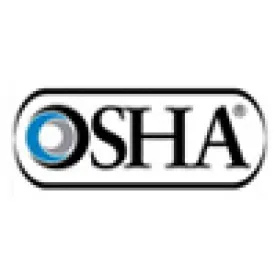The Ebola outbreak of October 2014 and the infection of health care workers treating infected patients in the United States dominated the headlines and frightened the nation. One year later, training and preparation for the next Ebola is fragmented and some nurses feel unprepared for the next pandemic disease. The Department of Health and Human Services (HHS) designated a system of 55 hospitals nationwide to manage suspected Ebola cases, but all hospitals have the potential to encounter a patient infected with Ebola or other pandemic disease, just as Texas Health Presbyterian Hospital discovered last year when a patient infected with Ebola presented to its emergency department. Subsequently, two of the hospital’s nurses contracted Ebola while attempting to provide lifesaving care to this patient. OSHA did not penalize the hospital because it was one of the first facilities to provide care to a patient infected with the virus. But it is entirely possible that OSHA could issue citations to hospitals that remain unprepared to safely respond to pandemic diseases now that a year has passed and engineering and administrative controls effective in reducing the spread of infectious diseases are now much more commonly known.
An independent investigation and a nurse’s subsequent lawsuit provide a glimpse into how lack of preparation and training contributed to the two nurses contracting Ebola at Texas Health Presbyterian Hospital. The hospital admitted in a Congressional hearing that nurses had not received Ebola training. And allegedly the supervisor of one of the infected nurses “Googled” protection gear before sending her in to treat the patient infected with Ebola. The independent investigation concluded that the hospital was “not prepared to diagnose and manage a patient who came to their facility without a preexisting diagnosis of Ebola.”
OSHA does not yet have published infection control regulations (proposed rules are expected in 2016), but healthcare employers still face liability under OSHA’s existing bloodborne pathogen and tuberculosis regulations as well as under the General Duty Clause. In its recent “Inspection Guidance for Inpatient Healthcare Settings,” OSHA references Centers for Disease Control and Prevention (CDC) guidelines including guidance for Isolation Precautions. The CDC has also published updated guidance specific to Ebola on its website.
State Plans may include additional requirements. Cal/OSHA, for example, mandates that employees receive live, in-person safety training – electronic training modules are prohibited. OSHA has stated that the Cal/OSHA requirements for employees working with patients infected with Ebola “may provide useful guidance for protecting [health care] workers exposed to Ebola virus.”
Health care facilities should consider taking the following steps to improve employee safety when treating patients infected with Ebola and other pandemic diseases:
-
Follow published CDC recommendations regarding Ebola and the necessary health care provider protective measures.
-
Follow CDC recommendations to stock at least 12 to 24 hours’ worth of personal protective equipment (PPE) to protect medical providers against Ebola transmission. This should provide enough time for a hospital to arrange transportation of a patient potentially infected with Ebola to an official HHS assessment or treatment facility for continued care.
-
Conduct in-person training regarding infection control and include hands-on practice donning, using, and doffing of PPE. This training should include performing necessary job tasks while using the PPE. Test employee understanding of the training to ensure comprehension.
-
Evaluate additional engineering controls including enhancements to electronic health record software to ensure staff members are asking the necessary screening questions and that any critical answer is easily visible and communicated to other care providers.
-
Consult with counsel regarding the development and implementations of these and other workplace safety measures so that the health care facility is prepared if OSHA initiates an inspection.
As discussed in a previous post, OSHA recently intensified its scrutiny of the health care and nursing care industries. In one recent example, OSHA cited a medical patient transportation company for training shortfalls and bloodborne pathogen violations and proposed fines totaling almost $236,000. In discussing the magnitude of the citations, Howard Eberts, OSHA’s area director in Cleveland, made clear that “[f]ailing to protect workers from pathogens that can cause life-threatening diseases is unacceptable.” Health care facilities should take heed and make sure that comprehensive precautions are put in place to promote a safe work environment for employees even in the most challenging situations — such as treating patients exposed to a pandemic disease.



 />i
/>i

